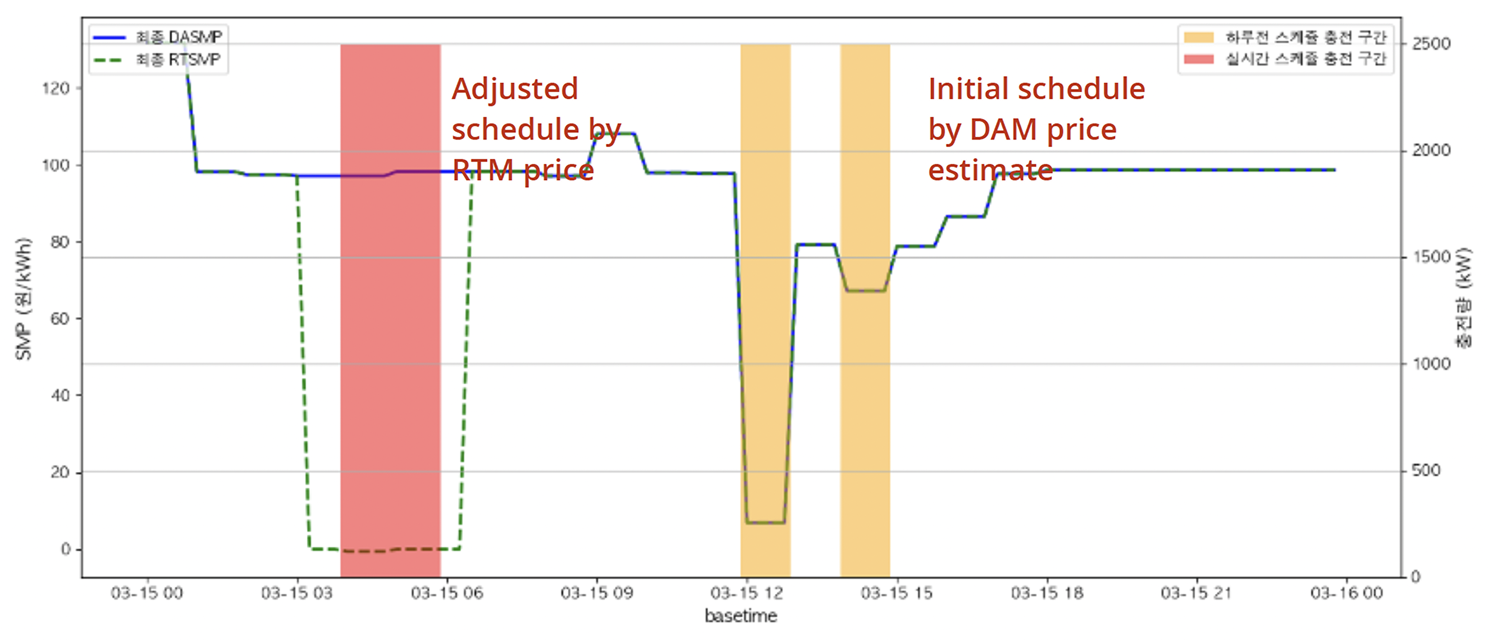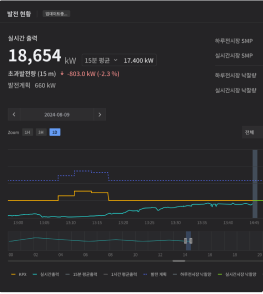Optimized ESS Charging/Discharging Scheduling Based on Market Fluctuations
This case showcases how ESS charge and discharge schedules are optimized based on market price forecasts and real-time fluctuations, with automatic responsiveness to VPP resource constraints to maximize battery profitability.
Challenges
Need for Profit-Optimized Scheduling
Profitability of standalone ESS systems integrated with VPPs requires careful consideration of market price fluctuations
Charging Limitations Due to Generation Constraints
Charging must not exceed the available generation from other VPP-connected resources, necessitating accurate and constraint-aware charge scheduling
Difficulty in Responding to Real-Time Market Changes
When day-ahead and real-time markets are separated, ESS operating schedules must dynamically adjust to real-time price fluctuations.
Limited Flexibility in Responding to Grid Operator Requests
The system must respond flexibly to grid operator dispatch instructions, including requests to ramp VPP output up or down
Solutions
Price Forecasting-Based Charge/Discharge Scheduling
Predict renewable generation and demand to create AI-driven market price forecasts, in order to identify optimal charging schedules that maximize profit
Charging Constraints Based on Generation Forecasts
Leverage proprietary weather forecasts and AI engines to predict generation from VPP resources, and establish appropriate charging constraints
Real-Time Rescheduling Based on Market Changes
Dynamically adjust ESS schedules in real time in response to market price fluctuations.
Flexible Operation in Response to Dispatch Instructions
Monitor VPP output changes and dispatch instructions from the grid operator to automatically enable real-time operational adjustments and enhance flexibility
Applications & Benefits

“The system maximizes ESS profitability by automatically optimizing charge · discharge schedules based on market price fluctuations, while enabling real-time responsiveness to VPP dispatch requests.”
- Maximizes battery revenue by leveraging market price variations and dynamically adapting schedules, especially in the real-time market
- Enables automated, real-time responses to grid operator requests, seamlessly readjusting schedules without manual intervention

